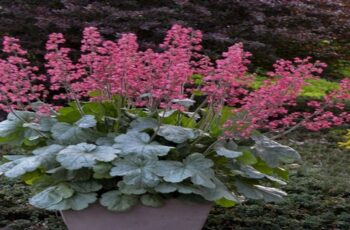Ad Blocker Detected
Our website is made possible by displaying online advertisements to our visitors. Please consider supporting us by disabling your ad blocker.
8/Avoiding Chemicals and Pesticides
When planting cucumbers, it’s important to consider the types of chemicals and pesticides that may affect your plants. These substances are known to cause long-term damage to the soil and may negatively impact the growth and production of the crop.
Using natural alternatives, such as companion planting, can help ward off pests and preserve the health of the cucumber plant. Avoiding harmful chemicals and pesticides can also help encourage diversity in the garden and support valuable pollinators like bees and butterflies.
So, next time you feel the urge to reach for a pesticide spray, consider natural options that will not compromise the health of the plant or the environment. With a little bit of care and attention, you can enjoy a bountiful cucumber harvest.
9/Not Rotating Crops
Not Rotating Crops: So, you decided to plant cucumbers this year, and you’re excited about your crop. You’ve found the perfect spot to plant and prepared your soil.
Now it’s time to plant your cucumbers. But before you do, remember the importance of rotating your crops. Crop rotation is essential for preventing pests and diseases from wreaking havoc on your cucumbers.
Planting cucumbers in the same spot year after year allows pests and diseases that attack cucumbers to build up in the soil, making it harder to grow healthy plants. By rotating your crops you can break the lifecycle of pests and diseases, making it harder for them to infect your plants. Avoiding plant diseases is critical when it comes to your cucumber crop.
It’s essential to rotate your crops by planting cucumbers in different parts of your garden each year. If you follow this simple rule, your cucumber plants will thank you, and you’ll have a bountiful harvest year after year.
10/Improper Mulching
Mulching is an important part of growing cucumbers. It helps retain moisture in the soil, suppresses weeds, and moderates soil temperature. However, improper mulching can actually do more harm than good. When mulching, make sure to leave a 1-2 inch gap around the stem to prevent rot and avoid burying the plant too deep.
Use a layer no thicker than 2-3 inches to prevent suffocating the roots. Over-mulching can also lead to excess moisture, which can encourage disease. Make sure to mulch correctly to reap the benefits without causing harm to your cucumber plants.
11/Not Checking the pH Levels
Maintaining the correct pH balance is essential when planting cucumbers. The pH influences nutrient uptake and affects the overall health of the plants. Testing the pH levels of your soil before planting can help you determine if it’s in the optimal range of 6.0 to 7.0. You can use a simple pH testing kit to do this.
If the pH levels are not within range, adjusting them is necessary. You can add lime or sulfur to increase or decrease pH levels, respectively. Avoiding extremes in pH is important, as it may lead to poor plant growth and disease susceptibility.
Checking your cucumbers’ pH levels regularly and adjusting them accordingly can ensure a healthy, productive harvest.
12/ Choosing the Wrong Varieties
Choosing the right cucumber variety for your area and the right cucumber size is crucial for a successful harvest. Do your research on the different varieties and their growth habits before making a decision.
Are you planting in a greenhouse or outside? In a warm or cool climate? A popular type is the English or greenhouse cucumber, which is ideal for indoor cultivation. For outdoor planting, the long, slender Asian cucumber is a great option.
Consider the size of the cucumbers you want to grow. Do you prefer pickling or slicing cucumbers? Pickling cucumbers are smaller and easier to grow while slicing cucumbers are larger and take longer to mature.
Choose the size and variety that suits your needs, and avoid any disappointment during harvest season. Remember, the right cucumber variety and size will help ensure a bountiful and delicious yield.
13/Avoiding Extremes in Temperature
Cucumbers are notoriously fickle when it comes to the temperature. They cannot tolerate extreme heat or cold which means they need the perfect growing environment. Avoiding extreme heat is essential as it can lead to wilted plants and sunburned fruits.
Make sure you provide shade to your plants and plenty of water during heat waves. On the other end of the spectrum, extreme cold can also cause issues for cucumber production. They are susceptible to frost and cannot be planted outside until soil temperatures reach a consistent 60°F.
Once that temperature is met, you should also ensure that the soil stays warm by using black plastic mulch or cloths to cover the plants during unexpected cold snaps. Protecting your plants from temperature extremes is crucial to getting a sustainable cucumber harvest.
Make sure the area you choose has adequate sunlight and a stable temperature. With the correct temperature and climate, cucumbers are a delicious and satisfying addition to any garden.

